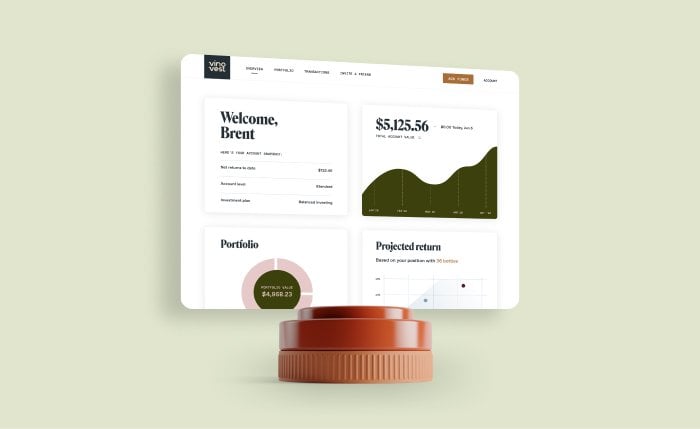Passive vs Active Investing: Pros & Cons, Which One’s For You?
Investors and active managers are often divided when it comes to passive investing vs active investing.
Active investing captures the gains from short-term stock market fluctuations while passive investing delivers higher returns in the long term.
While both strategies have other pros and cons too, choosing one over the other depends solely on your investment objectives.
Should you choose one over the other?
In this article, we’ll explore all about active and passive investing, and the pros and cons. We’ll look at when you should pick active investing over passive investing and vice versa.
Also discover how you can earn lucrative returns by passive wine investment through Vinovest.
Further reading
- Check out the Ultimate Guide to Wine Investment to build a high-return wine portfolio.
- Also, discover How Inflation Affects Your Investments and how you can hedge against rising prices.
What is Active Investing? (Pros & Cons)

Active investing is an investment strategy where you frequently trade assets to beat the average index returns and take advantage of any short-term fluctuations.
If you’re looking to invest in an active fund, you’ll need a higher level of expertise to identify the perfect time for investing.
To counter market fluctuations and earn consistent returns, you’ll also have to constantly keep track of your active fund portfolio and make regular investment decisions.
Given the hands-on approach, active investing is best suited for a portfolio fund manager or active investor.
1. Pros
Active investing has its fair share of advantages, including:
- More trading options: Unlike passive investing, active investing lets a portfolio manager pursue different trading options like shorting or hedging to beat market indices.
- Possibility to exit: In a high-risk scenario, active managers can employ different active strategies to hedge their bets and exit the market when needed.
- Better tax management: Active investing often incurs a higher capital gains tax. But it also lets an active manager sell any underperforming bond or mutual fund asset to offset taxes on their high-return investment.
- Flexibility: Active managers aren’t tied to a specific index and can pick and choose any actively managed fund investment from the stock market that provides them the highest gain.
2. Cons
However, an active investment strategy also has certain limitations like:
- More expensive: Actively buying and selling a stock or mutual fund asset adds transaction fees, making active investing costlier than passive investing.
- High tax bill: Active managers have to pay high taxes for their net gains yearly. So, more trading raises the tax bill significantly.
- Poses active risk: Since active investors can invest in any bond or mutual fund of their choice in the stock market, they are also prone to high risk if the investment underperforms.
- Demands skill and time: An active investment strategy demands a high level of skill and wealth management knowledge to reap maximum benefits. Also, since it involves buying and selling actively managed fund securities, active investors must invest significant time.
- Greater exposure to market trends: If you’re an active investor, you’re also likely to follow hot trends in the market (like investing in meme stocks), which can be risky.
What is Passive Investing? (Pros & Cons)

Unlike active investment, passive investing or index investing involves buying securities to own for an extended time period.
When investing passively, you don’t seek to gain profit from short-term market fluctuations.
Here are some examples:
- Investing in alternative assets like fine wine through fintech platforms like Vinovest, or other assets like cars and art is a great passive investment strategy.
- Since an index fund or exchange traded fund (ETF) is often in sync with market performance, asset allocation in such funds is also ideal for passive investors.
Most passive investors aim to gradually build wealth, assuming the market returns higher gains for your passive funds in the long term. Usually, the purpose of passive investing is to match the performance of different sectors or the market as a whole.
1. Pros
Passive investment is a comparatively safer investment strategy with several advantages like:
- Lower fees: Since passive investing is a long-term strategy, it doesn’t require an active fund manager or financial advisor to actively pick stocks, making oversight less expensive. Most passive funds follow their respective benchmark indices.
- Increased average returns: In the long-term, passive investing in an index fund always yields higher returns than active investing in a stock or mutual fund.
- Delayed capital gains taxes: Since passive investing is a buy and hold strategy, an investor can delay capital gains taxes until they sell. As a result, they don’t incur a high tax bill on their passively managed fund in a given year.
- Ease of investment: Passive investing doesn’t require specialized knowledge, deep research, or active management and is much easier to start than active investing.
- Transparency: Most index funds or ETFs that passive managers invest in consist of a known list of assets, which makes passive management a transparent affair.
- Minimal time requirement: While passive investing, you only need to monitor your passive funds for a short duration during tax filing and can spend more time on other pursuits.
- Returns dependent on company’s success: As passive investing relies on long-term returns, your gains will depend on the underlying company’s success and not on outperforming other investors.
2. Cons
But passive investment also has a few disadvantages, including:
- Limited investment options: Passive investing is often limited to index funds and ETFs (index investing) with little variation, limiting the opportunities for every investor.
- Difficulty to exit during bear markets: In the case of a market downturn, passive managers are locked into their passively managed fund and have no exit option. So, you’ll need to revise your asset allocation regularly.
- Less exciting: Passive investing requires minimal hands-on involvement, making it a tedious investment approach compared to active investing.
When Should You Pick Active Investing Over Passive Investing?

You can pick either active or passive investing depending on your investment goals and wealth management strategy.
But, it’s better to opt for active investing under certain situations:
- If you’re an investment manager focused on wealth preservation instead of growth over time, it’s ideal to stick with active investing.
For instance, if you’re close to retirement, hoping to earn a regular, fixed income, active investing works better than waiting for long-term returns through passive investing.
- Take this investment decision if you want the best possible returns in the short term and don’t mind slight portfolio underperformance.
- Active investing is the best avenue if you’re an active fund manager who enjoys the challenge of outwitting other fellow investors to earn high returns and is ready to research the market extensively.
In contrast, passive management works better:
- If you prefer long-term gains from passive funds over the best possible returns in the short term
- If you’re a passive investor who’s comfortable investing in index funds and ETFs without active management of your portfolio
- If you want to cut back on taxes and additional fees on your passive funds
However, you can make the best financial planning or investment decisions by combining both active and passive investment strategies.
Just be aware that a passive strategy or active investing are tied to stock market performance in the long or short term.
The result: Any market fluctuation can impact your potential returns.
Instead, to counter such turbulence and earn consistent gains, consider wine investment rather than debating active vs passive investing.
Earn Lucrative Returns through Passive Wine Investment

Wine is a secure, alternative asset class that can be an ideal hedge against inflation for a passive investor.
Unlike active investing in a bond or mutual fund, passive investing in index funds, ETFs, or real estate funds, wine investment is safe from fluctuations in stock market trends.
The other benefits of wine investment are:
- High returns: Wine investment has yielded about 13.6% annualized returns over the last 15 years, outperforming shares, bonds, and hedge funds in the stock market.
- Stability: As fine wine ages, it increases in value. If you hold on to your bottles for extended periods, you’ll have a high-value asset class in the long term.
- Accessibility: Fine wine is an easily accessible asset that you can begin investing in without specialized knowledge or securing a license. To invest in wine, you don’t have to be an investment manager or finance professional.
- Inflation Protection: Unlike active or passive investing, fine wine is an inflation-resistant investment, with most fine wine prices increasing with inflation.
- Recession Protection: Compared to traditional assets like hedge funds, real estate, an exchange traded fund, or a mutual fund, fine wine has a low correlation to the stock market and returns high gains even during a recession.
If you’re looking for a risk-free way to earn high returns, you can begin building your profitable wine portfolio by signing up on the Vinovest platform.
Vinovest is an AI-driven wine investment platform that lets you buy, store, and sell high-quality wine labels from around the world. Its expert financial advisor team helps hone your passive strategy and provides sound investment advice to pick the best possible wines.
Pick Wine Investment over Active or Passive Stock Investing

As an active or passive investor, you’ll have to closely monitor the stock market and different funds’ performances to get high returns.
While you’re debating between active vs passive investing, explore wine investment. You can potentially earn consistent profits by building a portfolio online with just a click of your mouse!
So, set up your profile on Vinovest today with just a few clicks and start investing in the best wines in the world.



